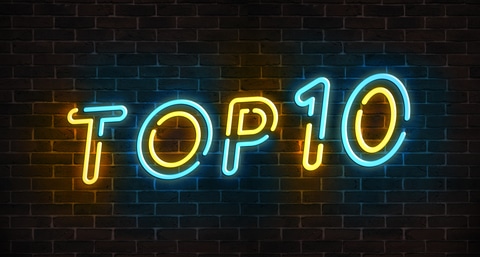Top 10 Tips for Synchronization and Supply Chain Resiliency
Supply chain sourcing and procurement have been integral to supply chains since Greeks, Romans, Chinese and Mesopotamians establishing trading networks in ancient days.
Railroads, the industrial revolution, the internal combustion engine, planes and other advances brought change.
Now, the simultaneous forces of perpetual disruption, deglobalization and globalization are tearing apart decades of relationships. Trade wars and shooting wars have torpedoed strategic sourcing, which viewed suppliers as long-term partners.
Those partnerships for sourcing and procurement must be rebuilt – often on the basis of friendshoring, nearshoring and reshoring. Future alliances could even be hemisphere-based instead of spanning the globe.
Insightful leaders now look askance at single-sourced supply chains. They favor adaptability, which requires optionality. Supply chain leaders must view the entire globe as your source of raw materials, parts and complete products.
Only supply chains with multiple sourcing will deliver through the coming disruptions.
Let’s delve into the world of sourcing and procurement. Below are my top 10 recommendations for how to synchronize sourcing and procurement while facing rapidly changing requirements.
What is Sourcing? What is Procurement?
But first, some definitions. Many people confuse sourcing and procurement. Others make the distinctions between the two extremely complex.
It really is simple.
Supply chain procurement is the overall process of sourcing and purchasing. Supply chain sourcing is the process of selecting and managing suppliers who provide materials or services to companies. Purchasing is the process that focuses on buying products and services from suppliers. So, in supply chain terms, Procurement = Sourcing + Purchasing.
1. Become Data-Driven
In the age of digital transformation, data is your secret weapon.
Harness the power of advanced analytics to gain insights into spending patterns, evaluate supplier performance and spot market trends. Supply chain leadership should let data guide your decisions and empower you to adapt to the ever-changing business landscape.
2. Invite Suppliers to the Table Early
Don’t just engage suppliers, make them your partners. Collaborate from the get-go, defining requirements, exploring innovative solutions and aligning expectations.
Embrace dynamic scoping, refining the scope based on evolving needs and supplier feedback. For complex projects, create prototypes or proof-of-concept early.
3. Develop Agile Sourcing Strategies
Adaptability is crucial in today’s dynamic market.
Consider agile sourcing and iterative negotiation strategies that allow you to swiftly respond to changing conditions. Be prepared to adjust your approach based on supply chain disruptions or market shifts.
4. Build Bridges, Not Walls, with Suppliers
Establish and maintain strong relationships with key suppliers. That is the backbone of a resilient supply chain.
Conduct supplier collaboration workshops, fostering spaces where suppliers and stakeholders brainstorm together. Effective communication and collaboration can help mitigate risks and enhance resilience.
Consider long-term partnerships that foster trust and reliability. Form cross-functional teams involving procurement, end-users and suppliers.
5. Turn Supplier Scorecards into Roadmaps
Don’t just assess supplier performance, use it as a tool for continuous improvement.
Regular feedback helps suppliers improve and align with evolving sourcing and procurement needs. These scorecards become key feedback mechanisms to keep suppliers current with the disruptions to your business and the need for continuous improvement and agility.
6. Embrace Flexibility and Agility
Prioritize flexibility in procurement processes and supply chain operations.
This includes agile sourcing strategies, adaptable contracts and responsive inventory management. Being nimble allows you to navigate uncertainties effectively.
Move away from lengthy, complex contracts. Pursue shorter, more flexible agreements that recognize the need to adjust contracts over their life. The more long-term partnerships you have (see No. 4), the more your partners will understand the need for periodic adjustments.
They will also understand how agility helps minimize supply chain risk.
7. Anticipate Volatility
Don’t just react to market changes, anticipate them. Aim to become a predictive function. Anticipate price increases, capture downward price movements, and create value from uncertainty.
8. Embrace Technology
Leverage advancements in AI and machine learning.
These tools can extract deep insights from previously unstructured data. Those insights can enhance spend transparency and help you capitalize on movements in supply markets.
9. Attract and Nurture Digital Talent
The world is facing demographic shifts and suffering from rising skill gaps. This means sourcing and procurement functions should focus on attracting candidates with analytical skills and data competence. to unlock value from agile ways of working and digital operating models.
10. Lead the Charge in Sustainability
As the transition to low-carbon energy continues, sourcing and procurement can lead efforts to minimize supply chain emissions. Your teams should secure high-demand green materials, make real progress on circularity and manage capital expenditure for achieving net-zero goals.
Keep Pace with Unprecedented Change
The sourcing and procurement landscape is evolving at an unprecedented pace.
The ten points outlined above are not just strategies. They are essential pillars for building resilient, agile and future-proof sourcing and procurement functions.
As we navigate this journey, remember that change is not a destination, but a process. Embrace it, lead it and most importantly, be ready for your global supply chains to adapt. The only constant is perpetual disruption.
Related Reading
- Supply Chain Segmentation Helps Conduct Beautiful Music
- 7 Ways AI and Generative AI Benefits E2E Supply Chains
- From 1 Factory for the World to the World Is Your Factory
- Raw Materials: The Start of Your End-to-End Supply Chain
Jim Tompkins, Chairman of Tompkins Ventures, is an international authority on designing and implementing end-to-end supply chains. Over five decades, he has designed countless industrial facilities and supply chain solutions, enhancing the growth of numerous companies. He previously built Tompkins International from a backyard startup into an international consulting and implementation firm. Jim earned his B.S., M.S. and Ph.D. in Industrial Engineering from Purdue University.


This post was exactly what I needed to read today Your words have provided me with much-needed clarity and reassurance